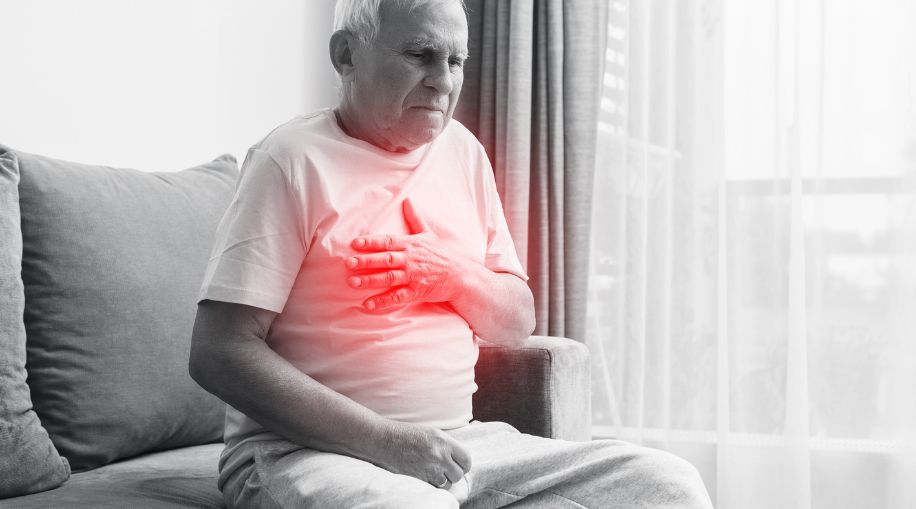Listen to Your Heart
A heart attack, also known as a myocardial infarction, occurs when there is a blockage in the blood vessels that supply the heart with oxygen-rich blood. This life-threatening event demands immediate attention, with early recognition of warning signs potentially saving lives. In this article, we will examine the seven signs of a heart attack, discuss what a heart attack is, what causes it and learn about available treatment options.
7 Signs of a Heart Attack
1. Chest Discomfort
The most common symptom, chest discomfort, is often described as a sensation of pressure, tightness or pain. This discomfort may radiate to the arm, back, jaw or neck, lasting several minutes or coming and going.
2. Shortness of Breath
Difficulty breathing or feeling breathless, even while at rest or during minimal exertion, can indicate a heart attack. This symptom may occur before or along with chest discomfort.
3. Fatigue
Unexplained fatigue or extreme tiredness, unrelated to physical exertion, could be an early sign of an impending heart attack. This is especially common among women.
4. Sweating
Profuse sweating, often accompanied by cold and clammy skin, can occur during a heart attack. This perspiration is different from the normal response to heat or exercise.
5. Nausea and Vomiting
Feeling nauseous or vomiting, which can be mistaken for indigestion or a stomach virus, is another potential sign of a heart attack. These symptoms may occur in isolation or accompanied by other signs.
6. Dizziness or Lightheadedness
Feeling dizzy or faint during a heart attack is indicative of a lack of blood flow to the brain. This symptom may present alongside other warning signs, particularly in women.
7. Discomfort in the Upper Body
Discomfort or pain in the arms (especially the left arm), back, jaw or neck may also accompany a heart attack. It is important not to dismiss these symptoms as unrelated muscle aches or strain.
Understanding Heart Attacks
A heart attack occurs when a part of the heart muscle does not receive enough oxygen due to a blockage in the coronary arteries. These arteries, responsible for supplying the heart muscles with blood and oxygen, can become narrowed over time due to the buildup of plaque. When the plaque ruptures, blood clots can form, obstructing the artery and causing a heart attack.
Causes of Heart Attacks
Multiple factors contribute to the development of heart attacks. Here are some common causes of heart attacks.
- Atherosclerosis: This condition involves the accumulation of fatty deposits, and plaque, inside the coronary arteries, making them narrow and restricting blood flow.
- High blood pressure: Consistently elevated blood pressure puts strain on the coronary arteries, leading to their damage and subsequent blockages.
- High cholesterol: Elevated levels of "bad" cholesterol (LDL) contribute to the development of plaque, increasing the risk of a heart attack.
- Smoking: Tobacco smoke damages the blood vessels, reduces oxygen levels in the blood and increases clot formation, all of which can contribute to a heart attack.
- Diabetes: Uncontrolled diabetes can cause damage to blood vessels, making blockages more likely.
- Family history: A family history of heart disease can increase an individual's risk of experiencing a heart attack.
- Obesity: Excessive weight puts strain on the heart, raising the likelihood of heart attack.
Treatment Options for Heart Attacks
During a heart attack, time is of the essence, and seeking immediate emergency medical care is crucial. Here are some treatment options used during or immediately after a heart attack.
- Aspirin: Chewing an aspirin tablet can potentially help prevent blood clot formation and minimize heart damage.
- Nitroglycerin: Nitroglycerin tablets or sprays may be administered to alleviate chest pain and relax blood vessels, improving blood flow.
- Thrombolytic therapy: In some cases, medication or procedures such as catheterization may be employed to dissolve blood clots obstructing the coronary arteries.
- Angioplasty and stenting: This minimally invasive procedure involves inflating a small balloon inside the blocked artery, followed by the placement of a stent to help keep the artery open.
- Coronary Artery Bypass Graft (CABG) surgery: Reserved for severe or complex blockages, CABG involves bypassing blocked arteries with grafts sourced from other blood vessels to restore normal blood flow to the heart.
- Lifestyle changes: To reduce the risk of recurring heart attacks, it is vital to adopt a heart-healthy lifestyle. This includes eating a balanced diet, engaging in regular exercise, quitting smoking and managing stress.
Beating the Odds
A heart attack is a life-threatening condition that requires immediate medical attention. Recognizing and understanding the seven signs of a heart attack empowers individuals to seek prompt medical help, potentially saving lives. By addressing risk factors, making lifestyle changes and adopting a heart-healthy approach, we can take significant steps towards preventing heart attacks and safeguarding our cardiovascular health. Remember, knowledge combined with action can help protect and prolong our lives.
Learn how you can improve your heart health quickly.

